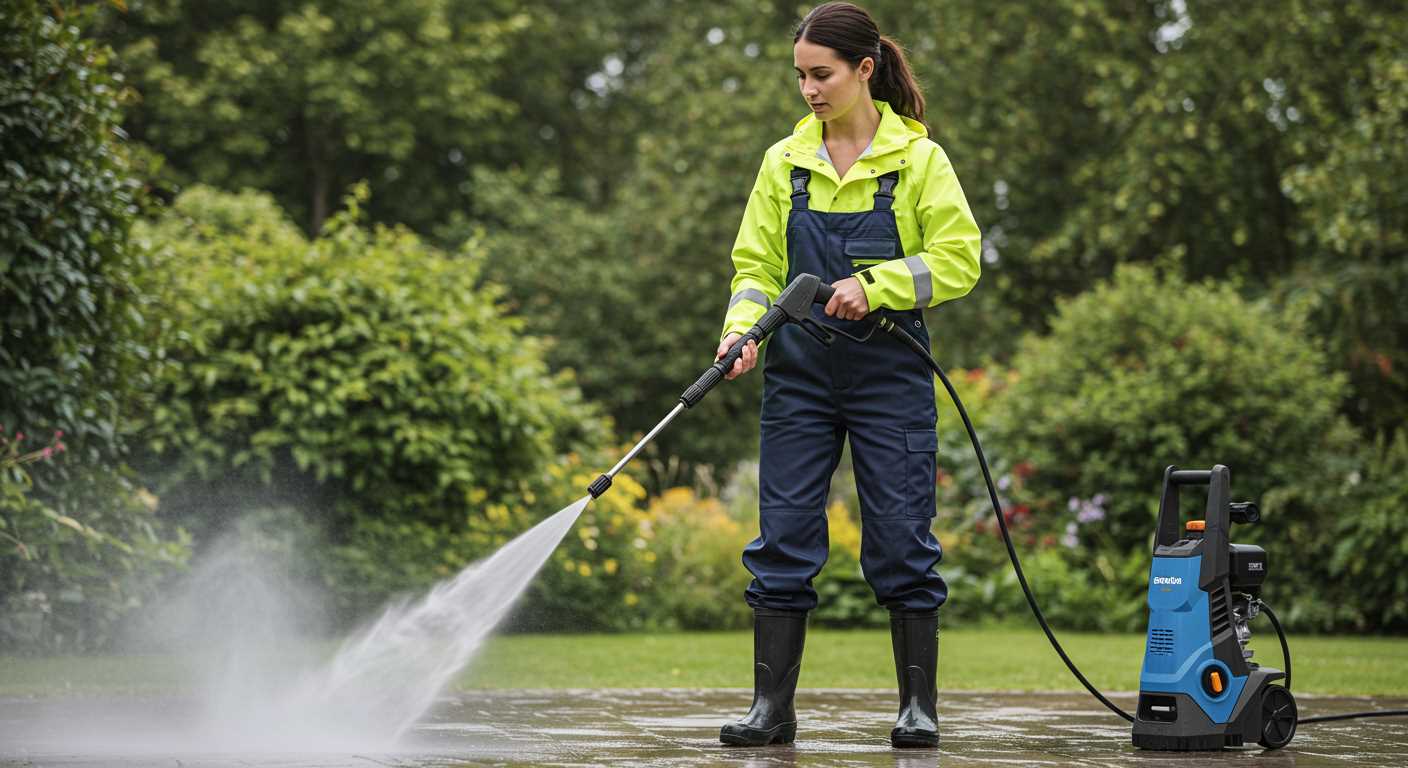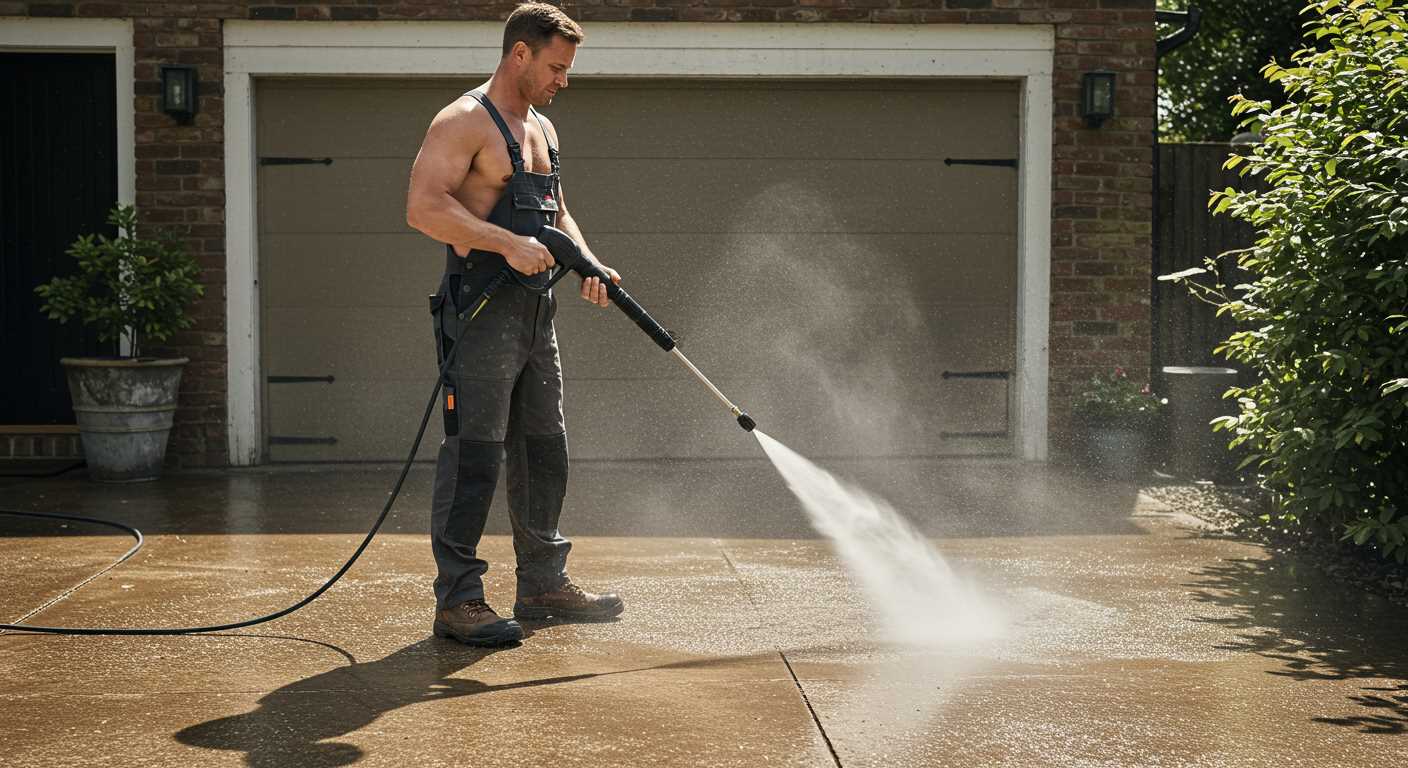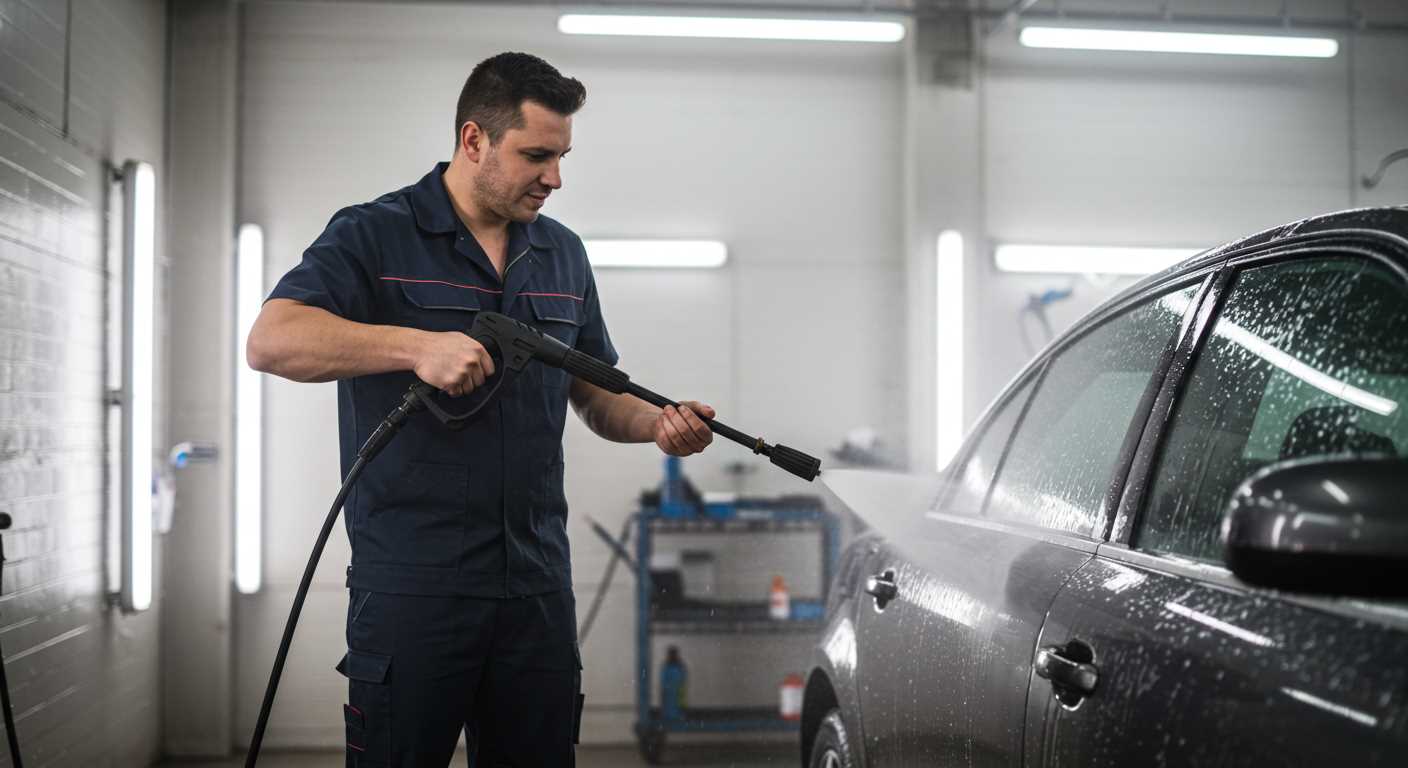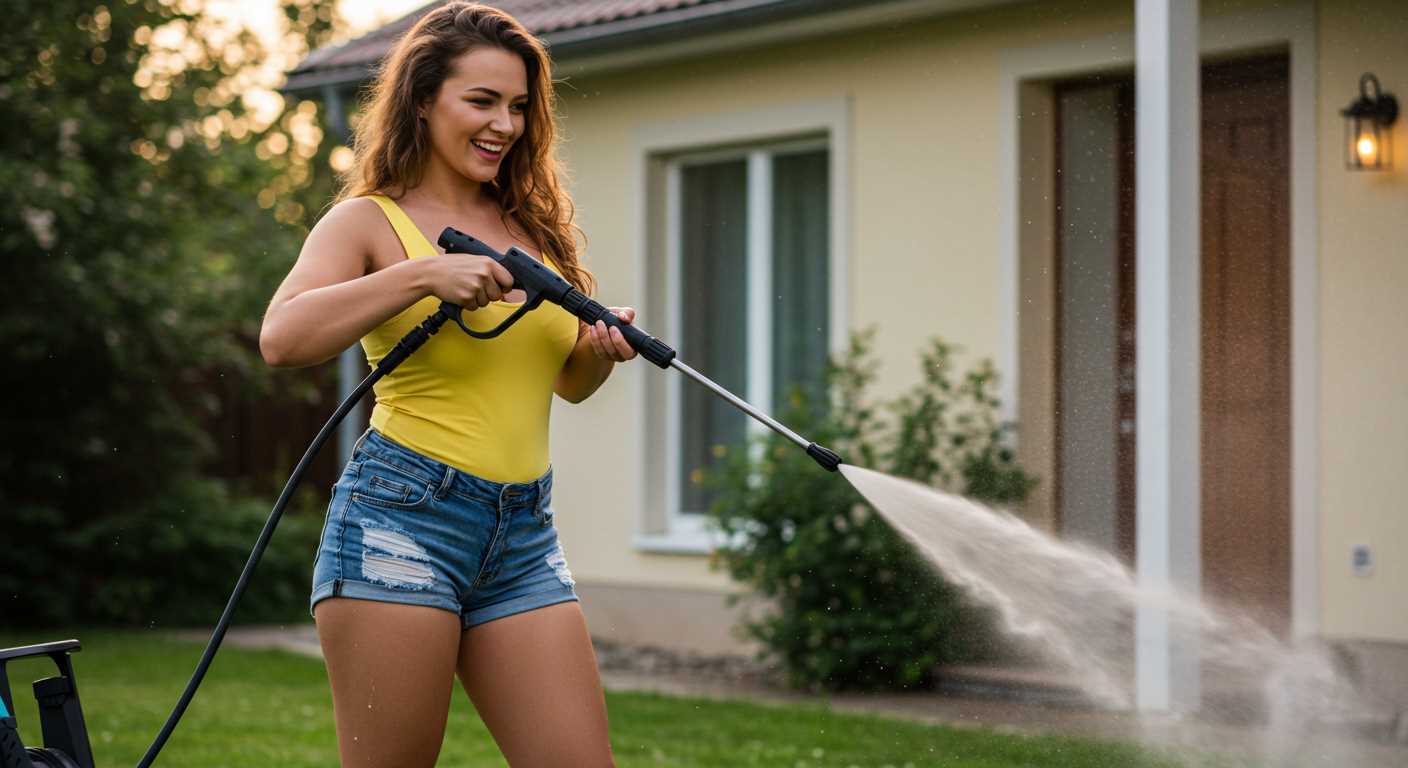

For those seeking reliable cleaning performance, knowing how the hydraulic component of your cleaning device functions is paramount. This unit operates on the principle of drawing water from a source, pressurising it, and then expelling it through a nozzle at high velocity. Such a mechanism is critical for effective removal of dirt and grime from various surfaces.
This hydraulic element is usually driven by an electric motor or gasoline engine, depending on the model. A typical design incorporates a series of pistons or a wobble plate. As the engine runs, it translates mechanical motion into hydraulic power. The consecutive movement of pistons within a cylinder compresses the water, elevating its pressure substantially before it exits through the spray wand.
Regular maintenance, such as checking for leaks and ensuring the inlet filter is clear, can significantly enhance the durability of this component. If you’re experiencing diminished performance, inspecting these areas could save you from costly repairs or replacements. Additionally, using an appropriate nozzle for the task at hand optimises water flow and pressure, ensuring efficient cleaning without causing damage to delicate surfaces.
Understanding the Basic Components of a Pressure Washing System
Familiarity with specific components enhances maintenance and repair. Key elements include:
- Motor: Provides energy to drive the entire system. Types include electric and petrol motors, each with distinct power outputs suited for various applications.
- Water Inlet: Connects the unit to a water supply. Ensure it has a reliable hose connection to avoid leaks.
- Valves: Typically, there are three main valves: inlet, outlet, and unloader. The unloader valve regulates pressure by diverting water flow if the trigger isn’t pressed, preventing damage.
- Cylinders: Inside the assembly, these are crucial for creating pressure. Commonly made of ceramic, they offer durability and longevity.
- Pistons: Drive water through the system. It’s important to select a unit with durable pistons to avoid frequent replacements.
Additional Relevant Components

- Thermal Relief Valve: Protects the system from overheating by releasing excess heat when the water temperature exceeds a certain threshold.
- Check Valve: Prevents backflow, ensuring water doesn’t drain back into the source when not in use.
- Hoses: High-pressure hoses must withstand significant pressure and abrasion. Look for reinforced designs for longevity.
Understanding these components amplifies reliability and efficiency in cleaning tasks. Regular inspection and maintenance of each part are necessary to prevent costly repairs and ensure effective operation.
How Pressure is Generated in the Pump System

Water is drawn into the assembly via an inlet. This phase begins as an electric motor or an engine initiates rotation, driving the internal components. The rotation quickly leads to a decrease in volume within the pumping chamber, creating a vacuum. As the vacuum forms, external pressure forces water in, preparing it for further transformation.
Once the water enters, the mechanism continues to compress it. The design of this apparatus utilises tapering cylinders or pistons that restrict the space, leading to an increase in kinetic energy. This compressive action accelerates the fluid, pushing it through narrowed outlets.
A crucial feature of this system is the unloader valve. As the water flows, the unloader momentarily redirects excess water back into the inlet when the trigger isn’t engaged. This relieves pressure during idle moments, protecting the internal components from damage.
The configuration concludes with an orifice or nozzle, which functions as the final restriction point. Here, accelerated water experiences a sudden release into open air, converting potential energy into kinetic. The result is a forceful jet, ideal for cleaning various surfaces and materials dramatically.
Consistent maintenance ensures all components operate seamlessly. Regular inspections of seals and valves, along with timely replacement of worn parts, are vital for maintaining optimal efficiency in generating necessary force for cleaning tasks. This diligence allows the equipment to perform at its peak and extends its operational lifespan.
The role of the motor in powering the pump
A reliable motor is fundamental for driving the high-pressure unit. Typically, electric or petrol engines are employed, with each type serving specific applications. Electric motors yield consistent performance, perfect for residential uses, while petrol variants offer mobility for larger tasks and remote locations. The power rating of the motor, often measured in horsepower (HP) or kilowatts (kW), dictates the output efficiency of the entire system.
Motor and its relationship with the pump

The motor generates rotational energy that is transferred to the pumping mechanism. When energised, the motor’s RPM (revolutions per minute) directly affects how quickly water is drawn from the source and forced through the nozzle. A well-matched motor and pumping unit result in optimal fluid dynamics, ensuring proper flow rate and pressure delivery for various cleaning tasks. It’s critical to select a motor that meets or exceeds the pump’s required specifications, as underpowered motors can lead to inadequate performance and premature wear.
Maintenance tips for motor longevity
<p.Regular maintenance is crucial to ensure the motor operates efficiently. Frequent checks of the power supply and connections help avoid fluctuations that can affect motor functionality. Keeping the motor clean from debris prevents overheating, which can shorten its lifespan. If the unit is petrol-powered, ensure that oil levels are maintained, and the fuel is fresh, as stale fuel can cause starting issues and affect overall efficiency.
Maintenance Tips for Extending Pump Lifespan
Regularly check oil levels and replace it as necessary. Using high-quality oil reduces friction and wear, ensuring smoother operation for longer periods.
Routine Cleaning
After every use, remove dirt and grime from the inlet and outlet ports. This prevents debris accumulation that could hinder performance or cause clogs. A soft brush and water will suffice for this task.
Winterisation

In colder climates, ensure to properly winterise the unit. Flush the internal components with antifreeze to prevent freezing and cracks. Follow manufacturer guidelines for specific solutions recommended for this process.
| Maintenance Task | Frequency | Tools Needed |
|---|---|---|
| Check oil level | After every 20 hours of use | Oil dipstick or gauge |
| Clean ports | After every use | Soft brush, water |
| Flush with antifreeze | Before winter storage | Antifreeze solution |
| Inspect hoses and fittings | Monthly | Visual inspection |
Inspect hoses and connections regularly for any signs of wear or leaks. Replace damaged parts immediately to prevent further complications that could impact the performance.
Keeping the unit in a clean, dry location reduces the risk of rust and degradation. This simple step contributes significantly to the life expectancy of the components.
By adhering to these guidelines, one can enhance reliability and longevity, reducing the need for costly repairs or replacements down the line.
Troubleshooting common pump-related issues
If water flow is inconsistent or weak, check the inlet filter for blockages. Remove the filter and clean it under running water. Ensure it is free of debris to restore optimal flow.
Should you encounter abnormal noises while operating, inspect for loose fittings or damaged seals. Tighten any loose components and replace seals as necessary to eliminate rattling or grinding sounds.
If water is leaking from the unit, examine the seals and O-rings for wear. Replace any worn or damaged parts to prevent leaks which can lead to decreased performance.
When experiencing overheating, it may indicate insufficient water supply or prolonged operation without breaks. Allow the device to cool down and ensure the water source is steady before resuming use.
Reduced cleaning power could stem from using the wrong nozzle. Test different nozzles to find the one suited for your task. A wider spray angle can lessen pressure and cleaning effectiveness.
Finally, if no water is emerging during operation, inspect the hose for kinks or blockages. Also, verify that the water service is turned on fully. Clear any identified issues to restore functionality.
Comparing types of pumps used in pressure washers
For maximum performance, selecting the right type of mechanism is crucial. Two main varieties dominate the market: axial and triplex units. Each has distinct features tailored to different applications.
Axial design is prevalent in consumer-grade models. Characterised by simplicity, these units are typically lighter and less expensive. They offer a straightforward operation with fewer components, making them easier to maintain. However, the trade-off is often limited durability and lower output pressure, which might not suffice for heavy-duty tasks.
On the other hand, triplex configurations are found in commercial equipment. This type comprises three pistons, allowing for higher performance and longevity. The intricate design enables seamless pressure regulation and enhances efficiency during prolonged use. While they come at a higher price point, their resilience and capability to handle demanding jobs make them a worthwhile investment for frequent users.
Another consideration is the material used in the construction of these systems. Brass components are prevalent in higher-end units, providing better resistance to corrosion and wear compared to plastic alternatives found in budget models. It’s essential to evaluate the build quality if you plan to use the machine intensively.
Noise level can also vary significantly between types. Axial mechanisms generally operate more quietly, ideal for residential areas. Conversely, the triplex versions may produce more sound due to their robust operation, which might be a factor for those sensitive to noise during use.
In terms of compatibility with detergents, axial pumps might struggle with aggressive cleaners, potentially leading to damage. Triplex units, however, can usually handle a wider variety of cleaning agents without adverse effects, providing flexibility in tackling diverse cleaning challenges.
Ultimately, your choice between these systems should hinge on how you intend to employ the equipment. For infrequent household tasks, an axial design may suffice. If you’re in commercial cleaning or need to perform heavy-duty operations regularly, investing in a triplex model will yield more significant benefits over time.








